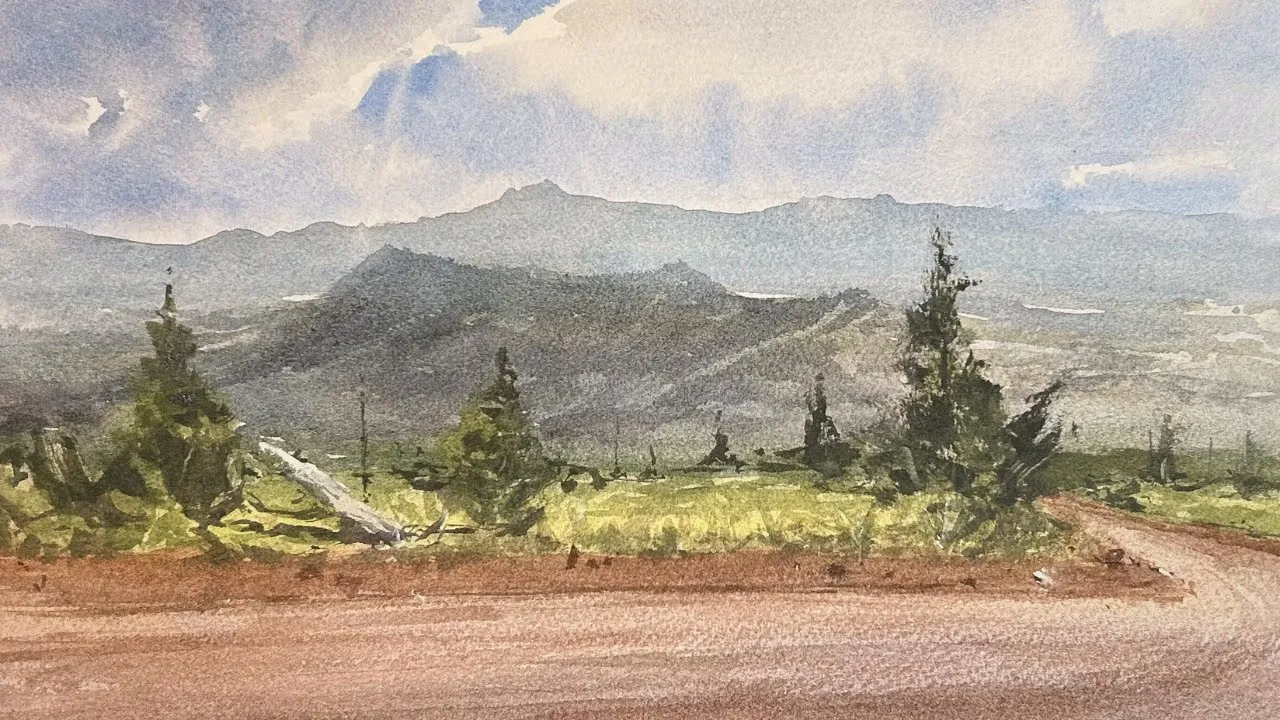How To Imbue Your Paintings With Targeted Focus
Aug 04, 2025It's essential to achieve an impression of depth without losing sight of your focal point, especially in a landscape scene like the one above that spans miles and great heights. It can be more difficult than it looks, though, to create both a powerful focus and a great distance.
Here are four techniques you can use today to improve your watercolor landscapes.
4 Invaluable Watercolor Tips for More Targeted Focus
1. Don't Paint Every Last Thing You See In Your Scene.
I get the temptation to paint every last detail in your reference photo, but if you set out to capture a photo (like the one below) exactly, you'll likely end up with an overworked, unfocused painting. One where different parts of the painting are vying for attention and there isn't a clear focal point.

For a more powerful watercolor scene, it's best to mute some of the minute details you see in the background or in parts of the painting that aren't the focal area.
When I was looking at this picture, for example, I knew that to get the unified scene I wanted, I was going to have to squint and allow some of the intricacies in the background blur. Instead of including every shade, line, and divot in those mountains, I did a lot of suggesting in my painting and I didn't feel overly loyal to the exact shapes in front of me. Instead, I wanted to capture the spirt of the scene, to recreate the atmosphere, and to create a compelling composition.

2. Use Color Temperature to Your Advantage.
This tip is pretty easy to explain.
Cool, diluted colors recede into the distance and warm, saturated colors push to the front. Carefully considering the colors you choose - and mixing the colors properly - can make a huge difference when you're working to create depth in a landscape painting like this one.
3. Add Texture and Detail in the Right Places.
Texture and details make a painting look finished. In fact, oftentimes it is those elements that get the most attention from viewers. But texture and detail added to each area of your painting can detract from the overall scene. Add texture in the places you want your viewer to pay attention to most - your focal point. Add details thoughtfully, as they move a subject forward in your scene.
For example, if a tree is meant to be perceived as being in the distance, each leaf shouldn't be delineated. And as you move toward the foreground, your trees should be more and more detailed.
4. Soften Lines that Detract From Your Focal Area.
If you look at my painting above, you'll notice that the lines of the mountains soften as they touch the edge of the paper. This is purposeful.
Be mindful of the way you are leading your viewer's eyes as they look at your painting. If there is a hard edge right at the edge of the paper, you're leading their eye right off the painting, away from the scene. By softening those lines, you bring focus to the middle.
This applies to other lines in the painting too. A soft line recedes and a hard line pushes an object forward in your scene. It draws the viewer's attention. So be aware of this as you progress through your watercolor painting process.
Paint More Powerful and Focused Paintings With These Tips
Before you put brush to paper, make one decision: what do you want your focal point(s) to be? This is where you want the most detail, the hardest edges, and the most saturation.
This will result in focused watercolor scenes and a more powerful painting.
Related Blogs
How to Use Cool and Warm Colors to Depict Distance
Paint Trees with Depth and Realism
How to Create a Focal Point in Art
